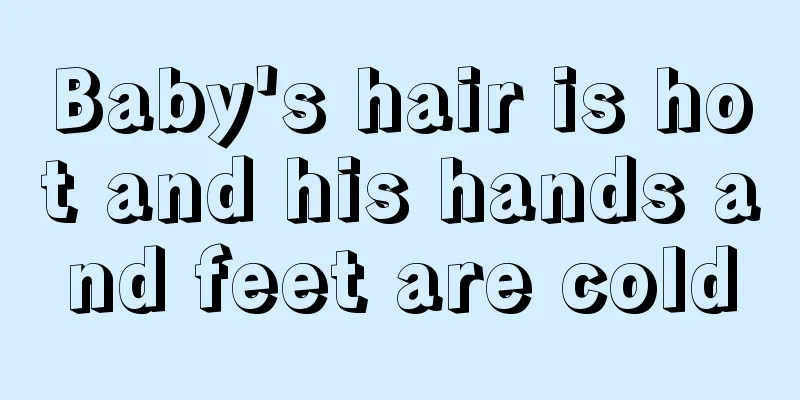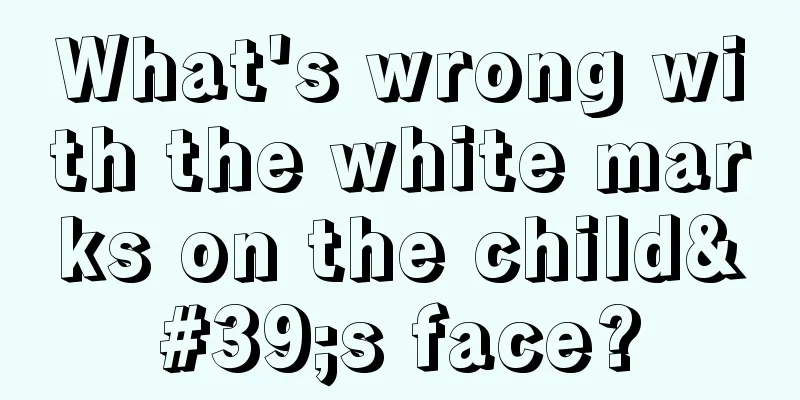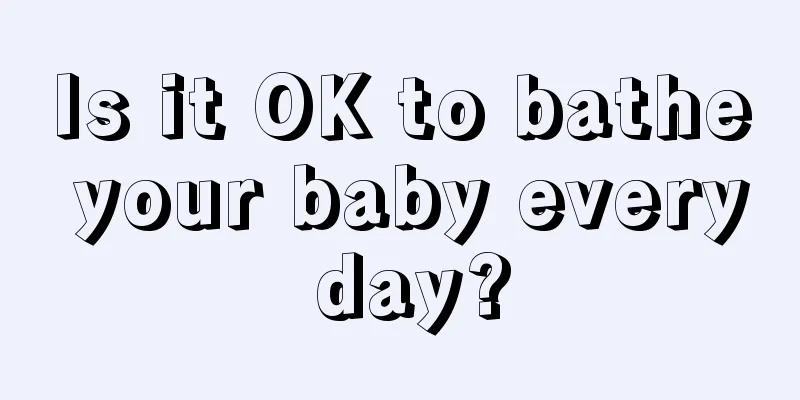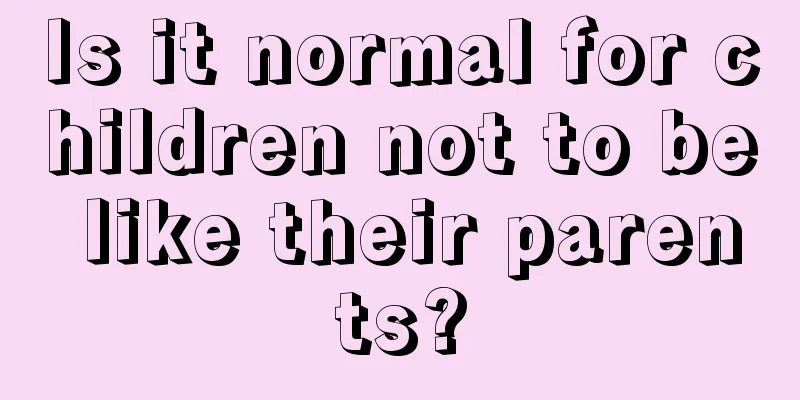Baby's hair is hot and his hands and feet are cold

|
We all know that babies under three years old are particularly prone to fever. If the baby has a low fever, doctors do not recommend medication. Generally, mothers are asked to use physical cooling methods for the baby. If the baby has a high fever of more than 38 degrees, it means that the condition is more serious. At this time, the baby should not be covered with a blanket. So what should I do if the baby has a fever and cold hands and feet? This situation occurs mainly because the baby is infected with inflammatory factors, causing fever. The human body temperature is controlled by the temperature center of the hypothalamus. If there is inflammation in the body, the temperature center will raise the temperature set point in order to enhance immunity and inhibit pathogenic bacteria. To achieve a higher body temperature, the body needs muscles to tremble to generate heat and constrict surface blood vessels to reduce heat loss. However, because the baby's limbs have less blood than its internal organs, they are more likely to feel cold than adults due to insufficient blood supply to their hands and feet. Moreover, the baby's nervous system is not yet fully developed, and the autonomic nerves responsible for managing vasodilation and contraction are prone to disorder. As a result, when the baby's high fever first occurs, the small blood vessels at the ends of the hands and feet are prone to spasmodic contraction and become cold. Therefore, it is normal for babies to have cold hands and feet when they have a fever, and parents do not need to worry too much.
Many parents will use the method of "covering the baby to sweat" when the baby has a fever, thinking that as long as the baby sweats, the fever can be reduced. These practices are not advisable! Experts say that babies' sweat glands are underdeveloped, and if they cover themselves up to sweat when they have a fever, the more they cover themselves up, the hotter they will often get. It is not easy to achieve the purpose of "sweating", but it is easy to cause "heat syndrome", which makes the baby have a series of symptoms such as high fever, pale complexion, slow reaction, difficulty breathing, etc., and it is even easy to induce high fever convulsions, which has an extremely adverse effect on the baby's physical recovery. What to do if your baby has a fever and cold hands and feet Experts remind: When your baby has a fever, be sure to measure the baby's body temperature in time and take corresponding measures according to the different stages of the fever. 1. When the baby's body temperature rises, the baby with fever will usually have cold hands and feet. At this time, you should pay attention to giving the baby more warm water. Massage and rub your baby's hands and feet appropriately to help improve peripheral circulation. 2. When the baby's body temperature continues to be high, use cold wet compresses on the baby's head or an ice pack on the head to cool the baby. If your baby doesn't want to put an ice pack on his head, you can use a wet towel or a fever-reducing patch. It should be noted that ice packs or wet towels should be replaced frequently. At the same time, don’t forget to replenish your baby with water. Drink more boiled water to help your baby urinate and sweat. Once the body temperature is controlled, the symptoms of chills and cold hands and feet will naturally be relieved. 3. Use a warm and wet towel to wipe the baby's armpits, neck, thighs and other areas rich in large blood vessels. The purpose of doing this is to evaporate the moisture on the baby's body, taking away some of the heat, thereby cooling down the baby with fever. We would like to remind everyone that you must not use alcohol to wipe. Although it can reduce fever quickly, the sudden drop in body temperature will have a counterproductive effect on the baby. In addition, alcohol can be absorbed into the baby's body through the skin and breathing, causing alcohol poisoning. 4. Give your baby a warm bath. Bathing can help dissipate heat. If your baby is in good spirits when he has a fever, you can take more baths and adjust the water temperature between 27 and 37 degrees Celsius.5. During the fever-relief period, the baby sweats a lot, so be sure to replace the baby's sweaty underwear in time. Don't panic when your baby has a fever When your baby has a fever and cold hands and feet, remember not to fall into the misunderstanding of "making the baby sweat". First use the above-mentioned physical cooling methods to help the baby's body cool down naturally and warm up his hands and feet. Remember to give your baby more warm water. This is the most natural anti-inflammatory method recommended by the World Health Organization. |
<<: Baby has a high fever of 40 degrees and cold hands and feet
>>: Two month old baby has cold hands and feet
Recommend
What to do if children have anorexia and picky eating
Some children with anorexia and picky eating ofte...
What causes pain above the child's belly button?
It is very common for children to have pain above...
At what age do children grow taller?
I believe that as a mother, in addition to hoping...
What disease is it that causes pimples all over a child’s body?
If a disease has systemic symptoms, it is general...
The difference between oral thrush and oral canker sores
Children are the core of every family. Any slight...
How to supplement children's vitamin D deficiency
Children's physical health is of great concer...
How to prevent paronychia in children
Paronychia is a very common disease in life. Ther...
What is the dosage of antelope horn powder for children?
Antelope horn powder actually has a relatively hi...
Is it good for children to eat cheese?
Everyone is familiar with dairy products, and man...
Does it hurt to extract baby teeth?
Dental problems are not age-specific, especially ...
Treatment for five-month-old baby sweating while sleeping
I don’t know if you have ever encountered the sit...
What should I do if my son has body odor?
Parents whose children suffer from body odor are ...
Treatment of upper respiratory tract infections in children
In fact, the air conditions are not very good now...
When does a baby start to have constipation?
Constipation is a very common phenomenon among in...
Urinary incontinence in children
Urinary incontinence is a very common disease. Th...









